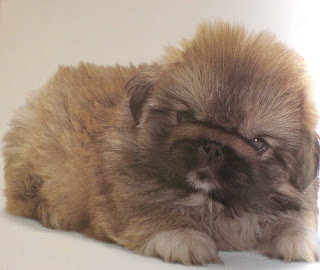 At birth, Yorkshire terrier puppies are as black as coal, with tan markings on their eyebrows, chin, ear tips, chest, and toes, but their colors lighten (and their coat lengthens) as they grow; their final coat pattern is unpredictable until 3 months. Professional breeders shave the hair of Yorkie puppies’ ears to help them prick up so their dark skin can be seen. Also, their physical growth is rather slow, it takes them about 2 years to fully mature.
At birth, Yorkshire terrier puppies are as black as coal, with tan markings on their eyebrows, chin, ear tips, chest, and toes, but their colors lighten (and their coat lengthens) as they grow; their final coat pattern is unpredictable until 3 months. Professional breeders shave the hair of Yorkie puppies’ ears to help them prick up so their dark skin can be seen. Also, their physical growth is rather slow, it takes them about 2 years to fully mature.Because of their long, shiny coats and big, dark eyes, dogs of this breed are referred to as “jewel that move.” However, although they may look like princesses, they have a Cinderella-like past. Around the mid 19th century, this breed was created by miners and mill workers to exterminate rats in their namesake region. Yorkies quickly surprised people with their beauty, though, and they were soon valued simply as pets.
These intelligent dogs are able to do whatever they are taught, but they are wiliful and may refuse to perform a command. Perhaps because of their terrier blood, they also feel compelled to dig holes in the yard, though they don’t require much exercise. Also despite their size, these dogs are assertive and wary, which makes them good guard dogs. It is important to train them not to bark unnecessarily, however.
Keeping their steel-gray coats shiny and beautiful requires some effort. Their long, silky hair tends to get tangled and form hairballs, making daily brushing necessary. Also, regular professional grooming is ideal.
Origin :
Size : (male) Height 6-7 inches ; weight 3-7 pounds
(female) same
Coat : Long, silky, and glossy.
Colors are steel blue on body, tan on chest, and light tan on legs; feathering on head is golden tan. Ears, roots of ears, and masks are darker.













